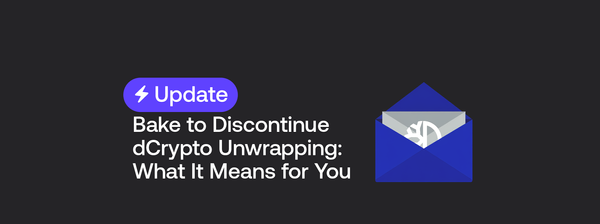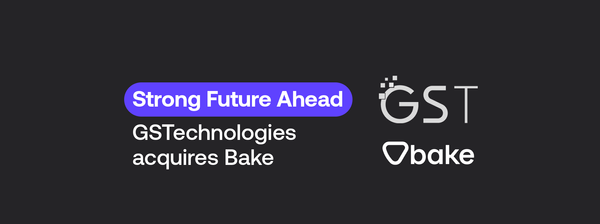What Is XRP? How Is It Different From Ripple?
If Bitcoin is considered the “digital cash” of the crypto world, then XRP is the PayPal.
XRP aims to move transactions away from centralized databases and introduce a more transparent and efficient method for payments — a goal not dissimilar to many other major cryptocurrencies on the market.
So, what makes XRP stand out?
XRP adopts a novel approach to blockchain that focuses solely on delivering an efficient transfer of value.
The software that powers XRP, the XRP Ledger, introduced an entirely new type of blockchain to the space upon its launch in 2012.
While most cryptocurrencies rely on a proof-of-work or proof-of-stake mechanism to validate transactions, XRP uses a Unique Node List (UNL) to decide which transactions to consider for the next ledger. To validate a transaction, the majority of these “Unique Nodes” must reach an agreement.
This innovative approach to blockchain is what makes the XRP ledger significantly faster at processing transactions than other cryptocurrencies. The XRP ledger can handle up to 1,500 transactions per second, compared to Bitcoin’s 4-5 per second and Ethereum’s 13 per second.
From what XRP is and how it works, this article will walk you through the basics of XRP. You’ll learn why XRP differs from other cryptocurrencies and why it is often confused with Ripple, its founding company.
What Is XRP?
To wholly grasp XRP, you need to understand its four main pillars: the XRP token, the XRP Ledger, Ripple, and RippleNet.
XRP Token
The XRP token is XRP. It is the cryptocurrency that powers the XRP ecosystem. Just like BTC, ETH, and other cryptocurrencies, it is used for peer-to-peer (P2P) payments, is traded on crypto exchanges, and can be held on any compatible crypto wallet.
XRP Ledger
The XRP Ledger is the decentralized blockchain that the XRP token operates on. It's the technology behind XRP, recording all its transactions.
Although many preach otherwise, the XRP Ledger is decentralized. It is powered by a network of peer-to-peer servers in the same way as Bitcoin, Ethereum, and other decentralized networks.
Its key point of difference is its approach to achieving consensus. Instead of relying on miners (PoW) or stakers (PoS) to validate transactions, the XRP Ledger's consensus algorithm uses a set of trusted validators.
While anyone can run a validator, not all validators are trusted by others in the network. To become a trusted validator, you'll need to build a reputation for stability, security, and reliability.
Ripple publishes a default list of trusted validators, but individual participants in the network can choose whom to trust.
This approach to consensus offers a balance between decentralization, speed, security, and sustainability. It's tailored to meet the demands of modern financial systems while ensuring transactions are secure and trustworthy.
Ripple
Ripple is the company that originally created the XRP Token and the XRP ledger. The company itself is often confused as being the same thing as XRP, but this is not the case.
Ripple, the company, is a for-profit organization that creates and licenses payment solutions for financial institutions. These solutions almost exclusively use (but don’t necessarily require) XRP and the XRP Ledger.
In essence, Ripple provides the technology for payment solutions, and XRP is the digital asset that powers some of those solutions.
RippleNet
RippleNet is the global payments network developed by Ripple, powered by XRP and the XRP Ledger. It's designed to streamline and accelerate the process of cross-border transactions.
RippleNet's key advantage is its ability to enable real-time settlements in any currency (even those with low liquidity), ensuring money is transferred almost instantly, regardless of location.
Within RippleNet, XRP acts as a bridge between any two fiat currencies, ensuring liquidity and facilitating almost instantaneous transfers. For instance, if a US bank wants to send money to a Japanese bank, it skips all traditional processes and directly converts its USD to XRP before sending it through Ripplenet. The Japanese bank receives this XRP and instantly converts it to JPY.
This technology is especially powerful in countries where there is no direct market for their currency. In such scenarios, converting their local currency to a globally recognized one often involves multiple intermediaries and hefty fees. RippleNet and XRP enable institutions to bypass these traditional hurdles.
Moreover, the use of XRP as a bridge currency reduces the need for banks to maintain large reserves of foreign currencies. This not only frees up capital but also reduces the operational costs associated with managing these accounts.
The result is a more streamlined, faster, and cheaper cross-border transaction process, which is particularly beneficial for financial institutions operating in emerging markets or regions with less liquid currencies.
XRP Pre-mine and Decentralization Debate
The launch of XRP was marked by the pre-mining of 100 billion tokens. These tokens were then strategically distributed to specific individuals, companies, and the broader public through various gifts and giveaways.
This pre-mine method was intended to eliminate the energy-intensive mining process associated with the proof-of-work consensus mechanism.
However, out of the total supply, 80 billion XRP tokens were allocated to Ripple (with 55 billion held in escrow). This significant allocation was intended to fund the operations, development, and promotion of the XRP ecosystem.
This approach polarized many in the crypto space. Some claim that such a structure isn’t “truly” decentralized and that XRP isn’t a genuine cryptocurrency.
However, while Ripple holds a large portion of XRP, it's crucial to differentiate between the company's holdings and the operation of the XRP ledger.
The XRP ledger operates in a decentralized manner, with validators spread across the globe. These validators are responsible for verifying transactions, and no single entity, including Ripple, has control over this process.
What Is the Difference Between Ripple and XRP?
Further amplifying the decentralization debates around XRP is its direct confusion with Ripple. Upon launch, Ripple made the error of naming the XRP token itself “ripple.”
This generated obvious confusion as people failed to differentiate between “Ripple,” the company, and “ripple,” the token. Hence, the eventual name change to “XRP.”
Today, there is a clear difference between XRP and Ripple that the XRP community has established.
Ripple is a centralized company. It is a for-profit organization run in the traditional sense. Its goals, however, align more with the decentralized ideology of crypto as a whole. This explains why Ripple builds solutions that utilize XRP and the XRP Ledger.
XRP, on the other hand, is a cryptocurrency that runs on a decentralized blockchain network (the XRP Ledger), just like BTC or ETH.
Although Ripple originally created and continues to help maintain XRP and the XRP Ledger, XRP itself exists outside of Ripple.
Anyone can download and run the XRP Ledger and become a validator in the network. If Ripple were to close its doors tomorrow, XRP would still survive.
Use Cases of XRP
Cross Border Transactions
XRP's primary use case is for cross-border transactions and remittances. With XRP, cross-border transactions can be completed in just 3-5 seconds with minimal fees, making it one of the fastest and cheapest methods for international money transfers.
XRP can also act as a bridge currency in cross-border transactions through RippleNet. This ensures smooth and efficient transfers without multiple currency conversions.
Banks
The traditional banking system, with its multi-day waiting periods and high fees for international transfers, is being challenged by XRP's promise of real-time, low-cost transactions.
By acting as a bridge currency, XRP ensures that banks don't need to maintain large reserves of foreign currencies. Instead, they can convert their local currency to XRP, send it across the world in seconds, and the receiving bank can then convert it to their local currency.
Some notable banks already using XRP (through RippleNet) include:
- Bank of America (USA): The second-largest bank in the US has been one of Ripple’s long-standing financial partners. Their collaboration has helped set international standards for XRP and enhanced its global presence.
- Santander Bank (USA): Santander Bank has been in partnership with Ripple since 2018. With Ripple's technology, the bank launched the One-FX service, which facilitates cross-border payments between US and EU customers.
- Siam Commercial Bank (Thailand): This bank adopted XRP in 2020 to launch SCB Easy, its outward remittance service.
- Standard Chartered Bank (UK): Standard Chartered has been using XRP since 2016 and provides payment services to customers in over 50 countries with its help.
- PNC Bank (USA): PNC Bank has been in partnership with Ripple since 2016 to enhance its payment speed.
- Cuallix (Mexico): Cuallix adopted Ripple in 2017, working to improve payments between the US and Mexico.
Enterprise
Large businesses that operate in multiple countries can use XRP for real-time gross settlement. This allows for the instant processing of large transactions, improving cash flow and efficiency.
For instance, companies with global supply chains can use XRP for real-time payments to suppliers. Online businesses can also integrate XRP as a payment method, offering customers a fast and low-fee option.
How Is XRP Different From Other Cryptocurrencies?
What sets XRP apart is its purpose. Unlike Bitcoin, which was created as an alternative to traditional currencies, XRP was designed to enable swift and direct transfers between parties, regardless of the currency they transact in.
Here's a closer look at what sets XRP apart:
Consensus Mechanism
While most cryptocurrencies rely on a proof-of-work or proof-of-stake mechanism to validate transactions, XRP uses a Unique Node List (UNL) to decide which transactions to consider for the next ledger. For a transaction to be validated, a majority of these “Unique Nodes” must reach an agreement.
Speed and Efficiency
One of XRP's most notable features is its speed. The XRP ledger can handle up to 1,500 transactions per second, making it significantly faster than Bitcoin, which averages between four and five transactions per second, and Ethereum, which manages about 13 transactions per second. This speed is crucial for its primary use case: facilitating real-time cross-border transactions.
Energy Consumption
The environmental impact of cryptocurrencies has been a topic of discussion, especially concerning Bitcoin's enormous energy consumption due to its proof-of-work mechanism.
In contrast, XRP is considered one of the world’s greenest cryptocurrencies, consuming 0.0079 kWh of electricity per transaction — a mere 0.00112% of the 707 kWh Bitcoin typically burns per transaction.
Scalability
Unlike most blockchain networks, the XRP Ledger has successfully achieved scalability since its inception. As one of the most scalable blockchain networks, the XRP Ledger can efficiently handle a high volume of transactions.
Cost-Effectiveness
XRP transactions are renowned for their low fees, setting them apart from other cryptocurrencies that distribute transaction fees among network validators. To further keep fees low, the XRP Ledger is built with a unique mechanism that burns these fees. In turn, XRP is an attractive option for large-scale transfers.
The Future of XRP
As more financial institutions recognize the benefits of RippleNet and the XRP Ledger, the adoption of XRP is set to rise.
The cryptocurrency's potential to facilitate real-time, low-cost cross-border transactions positions it as a game-changer in the financial sector.
As technology continues to advance and the world becomes even more interconnected, XRP will be pivotal in shaping the future of global finance.
Where Can I Buy XRP?
XRP is one of the most prominent cryptocurrencies and is available for purchase on almost any major cryptocurrency platform or exchange.
The most convenient option, if you are looking to use your XRP to earn interest, is through Bake.
Sign up to Bake today and purchase XRP in just a few clicks!
DISCLAIMER: Please note that the information on this blog and in any articles posted on this blog is for general information only and should not be relied upon as financial advice. Cake Pte. Ltd., Bake, UAB, and its affiliates (the “Cake Group”) are not licensed financial advisers. You may wish to approach your own independent financial advisor before making any decision to buy, sell or hold any product and/or digital assets mentioned in this blog.
Any views, opinions, references, assertions of fact and/or other statements are not necessarily the views held by the Cake Group. The Cake Group disclaims any liability whatsoever that may arise out of or in connection with such statements. Always do your own research before investing in any financial assets and consult a qualified financial advisor if necessary.




